
Exposé Online
What's old
Exposé print issues (1993-2011)
- 1 (October 1993)
- 2 (February 1994)
- 3 (May 1994)
- 4 (August 1994)
- 5 (October 1994)
- 6 (March 1995)
- 7 (July 1995)
- 8 (November 1995)
- 9 (March 1996)
- 10 (August 1996)
- 11 (February 1997)
- 12 (May 1997)
- 13 (October 1997)
- 14 (February 1998)
- 15 (July 1998)
- 16 (January 1999)
- 17 (April 1999)
- 18 (November 1999)
- 19 (May 2000)
- 20 (October 2000)
- 21 (March 2001)
- 22 (July 2001)
- 23 (December 2001)
- 24 (April 2002)
- 25 (September 2002)
- 26 (February 2003)
- 27 (August 2003)
- 28 (December 2003)
- 29 (April 2004)
- 30 (September 2004)
- 31 (March 2005)
- 32 (September 2005)
- 33 (May 2006)
- 34 (March 2007)
- 35 (January 2008)
- 36 (October 2008)
- 37 (July 2009)
- 38 (July 2010)
- 39 (Summer 2011)
Features
Keeping the Man Happy —
The Happy the Man Interviews
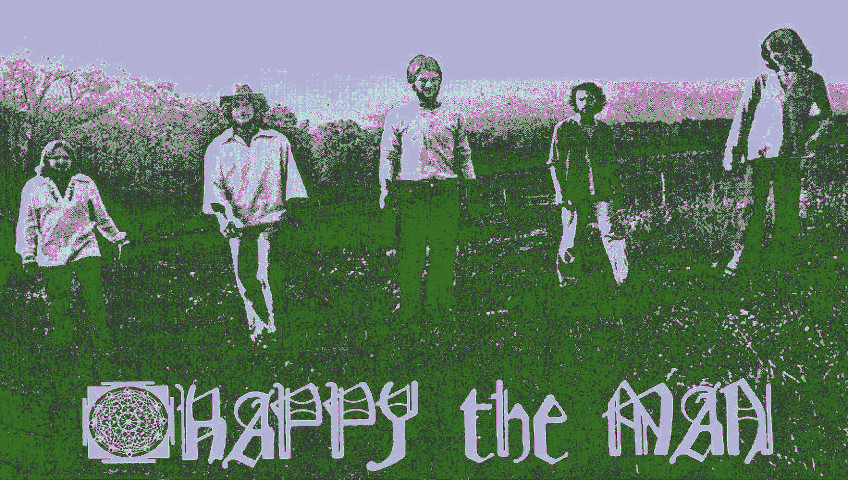
Composers of American classical music over the last century have often been criticized for their lack of originality, for borrowing too heavily from their European counterparts. People often point to Aaron Copeland as the exception to the rule. Similarly, in the 70s, American progressive rock bands were often just knock-offs of the European bands. Happy the Man are to American progressive what Copeland was to classical — a fantastic exception to the rule.
by Dan Casey, Published 1997-02-01
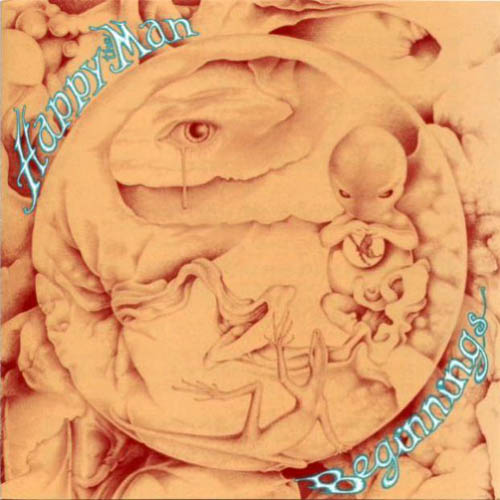 Background and Overview
Background and Overview
The first line-up of the band included Kit Watkins (keyboards), Frank Wyatt (keyboards, saxes), Stan Whitaker (guitars), Rick Kennel (bass), Mike Beck (drums, percussion), and Cliff Fortney (flute, keyboards, vocals). More details on the formation of the band are covered in the interviews included here.
The band, although perhaps naive, had pooled together their vast and diverse resources and began to forge some creative ground of their own. Their early material showed a great sensitivity to melody coupled with some grand dynamic contrast. With some help from Kit Watkins, Wayside released some of this early material on the CD Beginnings (1990, WMAS 3), which is essential for die-hard fans of the band, as it contained some material never heard before. The two highlights are the wonderfully delicate "Passion's Passing" and the Genesis-like "Don't Look to the Running Sun."
Cliff Fortney's departure from the band left the band favoring more instrumental material, with a stronger sense of complexity, maturity and ambition. During this period HtM developed into the band that would eventually become signed with Arista Records and release two landmark albums, the self-titled debut and the follow-up Crafty Hands.
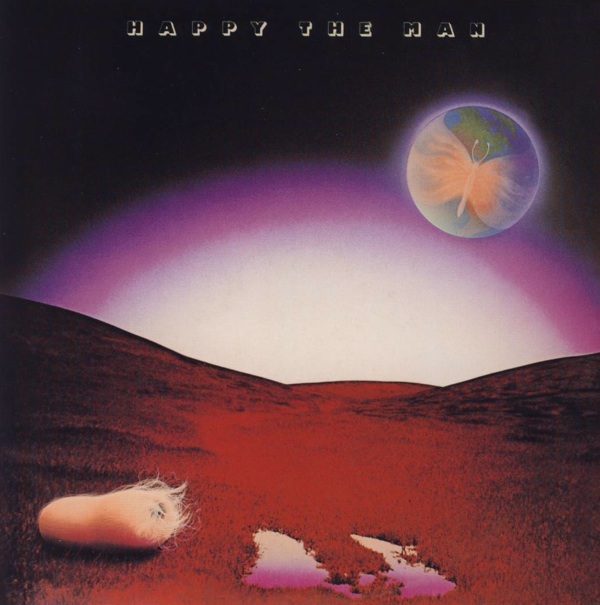 The first album appeared in 1977, and to this day remains probably the most important album in American progressive music. The album opens with "Starborne," a gentle keyboard-dominated piece that builds into a thundering symphonic statement while moving through some wildly original chord changes. Watkins established himself early in his career as a master songwriter, using voicings and progressions the likes of which are rarely seen in this type of music. Whitaker's "Stumpy Meets the Firecracker in Stencil Forest" follows that tune, with its addictive, jagged and bouncy melody line. This tune, like many of Stanley's allowed the band to venture into more rocking territory. "Upon the Rainbow (Befrost)" follows, and is one of two vocal tunes on the album. Then comes the magnum opus: "Mr. Mirror's Reflection on Dreams," a song so strong the band regularly closed their live show with it. The extended guitar solo in the middle builds continuously into a bold closing theme that sends shivers down the spine. Frank Wyatt's abstract "Carousel" closes out the first side of the album, and contains perhaps the finest Moog solo (by Watkins) of all time.
The first album appeared in 1977, and to this day remains probably the most important album in American progressive music. The album opens with "Starborne," a gentle keyboard-dominated piece that builds into a thundering symphonic statement while moving through some wildly original chord changes. Watkins established himself early in his career as a master songwriter, using voicings and progressions the likes of which are rarely seen in this type of music. Whitaker's "Stumpy Meets the Firecracker in Stencil Forest" follows that tune, with its addictive, jagged and bouncy melody line. This tune, like many of Stanley's allowed the band to venture into more rocking territory. "Upon the Rainbow (Befrost)" follows, and is one of two vocal tunes on the album. Then comes the magnum opus: "Mr. Mirror's Reflection on Dreams," a song so strong the band regularly closed their live show with it. The extended guitar solo in the middle builds continuously into a bold closing theme that sends shivers down the spine. Frank Wyatt's abstract "Carousel" closes out the first side of the album, and contains perhaps the finest Moog solo (by Watkins) of all time.
Whitaker's vibrant romp "Knee-Bitten Nymphs in Limbo" opened the second side of this LP, and would prove to be a favorite live number with its incredibly nimble lead synth lines by Watkins. "On Time as a Helix of Precious Laughs" was the second vocal tune on this album, another Wyatt composition. The lyrics are contemplative, and the song equally moody, but the highlight is a monster guitar solo from Whitaker, perhaps his finest. A Watkins tone poem "Hidden Moods," which would also become a live favorite, follows, and showed the band's prowess at counterpoint despite being overall a very gentle piece of music. Wyatt's "New York Dream's Suite" closes out the album, and is probably the most abstract number the band recorded in the post-Fortney days. Here, Beck's tasteful use of auxiliary percussion and Wyatt's compositional giftedness combine in a remarkable and original finale to their most essential album, in this reviewer's opinion.
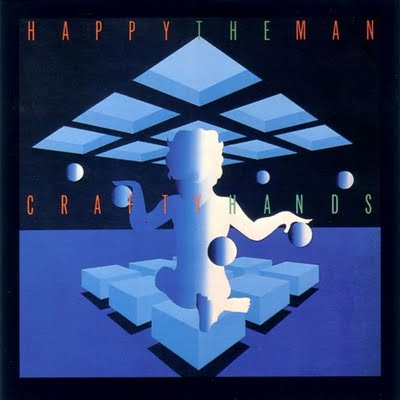 Many fans, however, cite the second album, Crafty Hands as the highlight of HtM's career. Perhaps because of its narrower and more concise scope, or because of its more refined writing and performing, Crafty Hands would certainly prove to be another masterpiece regardless. New drummer Ron Riddle resurrected an old tune "Service with a Smile" to open the album, a tune so hot the band regularly opened live shows with it. Here, Riddle would make it very clear he was a drummer of power and precision, as this 11/8 scorcher is loaded with some of the most jaw-dropping fills one would ever hope to hear. Another Watkins tone-poem, "Morning Sun," provides a soothing interlude before side one's centerpiece, "Ibby It Is," a lengthy Wyatt composition with a burning guitar/synth passage at the end. Whitaker's upbeat "Steaming Pipes" meanders through some fancy odd-time and closes out the first side.
Many fans, however, cite the second album, Crafty Hands as the highlight of HtM's career. Perhaps because of its narrower and more concise scope, or because of its more refined writing and performing, Crafty Hands would certainly prove to be another masterpiece regardless. New drummer Ron Riddle resurrected an old tune "Service with a Smile" to open the album, a tune so hot the band regularly opened live shows with it. Here, Riddle would make it very clear he was a drummer of power and precision, as this 11/8 scorcher is loaded with some of the most jaw-dropping fills one would ever hope to hear. Another Watkins tone-poem, "Morning Sun," provides a soothing interlude before side one's centerpiece, "Ibby It Is," a lengthy Wyatt composition with a burning guitar/synth passage at the end. Whitaker's upbeat "Steaming Pipes" meanders through some fancy odd-time and closes out the first side.
The only vocal tune on the second album would be "Wind up Doll Day Wind," which opens the second side. The tune is made up of multiple themes that intertwine tastefully between vocal sections. "Open Book" is a five minute excerpt from a much longer work entitled "Death's Crown," written by Wyatt. This is most original and unique moment on Crafty Hands and highlights HtM in a more acoustic and expressive mood than the balance of the material here. Watkins' "I Forgot to Push It" follows, a fast-paced cooker with some simply devious counterpoint lines. "The Moon, I Sing" closes out the album appropriately, with a simple 5/8 theme that mutates through several different keys and moods, from gentle and beautiful to grand and powerful.
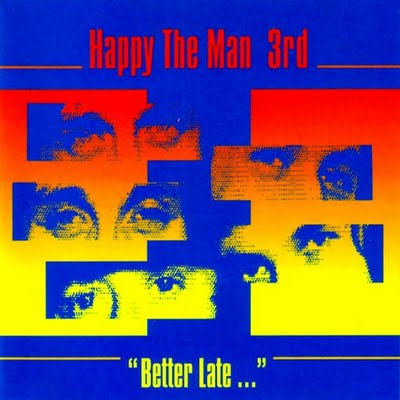 The contract with Arista records was dissolved after the release of Crafty Hands, although the band continued onward, this time with drummer Coco Roussel. In 1979 the band independently recorded its third album which wouldn't see the light of day for several years following. Aptly titled Better Late..., it contained some of the band's finest material and showed them growing and stretching into some new territory. Four of the 10 tracks were vocal numbers, and the instrumental tracks on the first side would prove to be personal favorites of many of the members. The highlights include "Eye of the Storm" (featuring perhaps Watkins' best melody line ever), Wyatt's "At the Edge of This Thought," and two monster instrumentals, "Labyrinth" and the often-overlooked "Footwork." This third incarnation of HtM would cease to exist when Watkins joined Camel in 1979. And the rest is history...
The contract with Arista records was dissolved after the release of Crafty Hands, although the band continued onward, this time with drummer Coco Roussel. In 1979 the band independently recorded its third album which wouldn't see the light of day for several years following. Aptly titled Better Late..., it contained some of the band's finest material and showed them growing and stretching into some new territory. Four of the 10 tracks were vocal numbers, and the instrumental tracks on the first side would prove to be personal favorites of many of the members. The highlights include "Eye of the Storm" (featuring perhaps Watkins' best melody line ever), Wyatt's "At the Edge of This Thought," and two monster instrumentals, "Labyrinth" and the often-overlooked "Footwork." This third incarnation of HtM would cease to exist when Watkins joined Camel in 1979. And the rest is history...
Happy the Man were, and still are, ahead of their time in so many ways. Musically, they combined elements never heard before, and the chemistry of the three main writers (Watkins, Wyatt, and Whitaker) gave the band many different faces. Although some of their influences were obvious, HtM pushed the boundaries of rock music with their masterful dynamics, brilliant melodies, astounding technical ability, and visionary ideals.
Christopher "Kit" Watkins
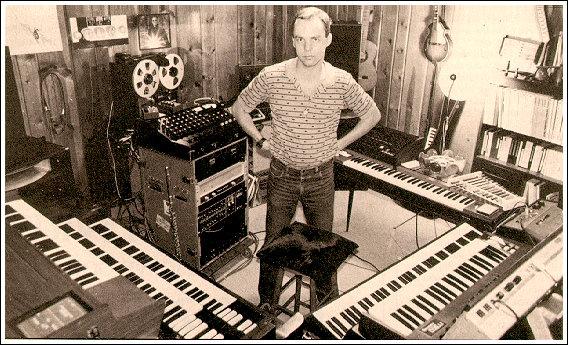 Born: Harrisonburg, Virginia, 1953
Born: Harrisonburg, Virginia, 1953- Current Career: Publisher, Composer, Recording Artist, Graphic Artist
- HTM Influences
- Genesis
- Gentle Giant
- Mahavishnu Orchestra
- Jan Hammer
- Weather Report
- Joe Zawinul
- Eberhard Weber
- Terje Rypdal
- Brian Eno
- Paul Winter
- Ravel
- Debussy
- Tomita
- Wendy Carlos
- Current Influences
- Steve Reich
- David Torn
- Erik Satie
- David Borden
- Harold Budd
- Michael Brook
- Brian Eno
- Jon Hassell
- Jeff Greinke
- Robert Rich
- Proudest HTM tracks
- Eye of the Storm
- At the Edge of This Thought
- I Forgot to Push It
- Other Projects
- Camel (1979, tours 1979-1982)
- 12 solo albums (1981-1996)
- However (guest on Calling 1982)
- Kit & Coco (In Time 1985, Reaching Beyond 1992)
- Richard Sinclair (guest on RSVP 1994)
- Djam Karet (guest on Collaborator 1994)
From Beginnings through the first HtM album, the band's style became more well-defined and solidified. Describe this growth, both as a band and as an individual composer.
During the first two to three years, you're correct in noting that our style became more solidified. That was actually the result, in large part, of our decision to become a mainly-instrumental band, which happened after Dan Owen, the band's second vocalist, left in early 1975. At that point we were pretty bummed out because we had no prospects for who we could get to fill Dan's shoes. That's when we pulled together and started almost from scratch in the new direction. It was really the turning point and we abandoned most, if not all, of the previous material. I believe the first piece we did in this new direction was "Leave That Kitten Alone, Armone," which Frank wrote. That song had such a positive, uplifting spirit about it, it really propelled us forward in a very purposeful way. Stanley wrote "Stumpy Meets the Firecracker in Stencil Forest," I wrote "Mr. Mirror's Reflection on Dreams," the band was like a phoenix rising out of the ashes. That period was an exciting, although turbulent, time of change.
One of the most remarkable things about the first HtM album is the clarity and sharpness of the lead synth lines (the Minimoog lines). How was this achieved?
We ran the Minimoog direct into the board, sometimes through my Echoplex, wah-wah pedal, and volume pedal first.
Was Jan Hammer's style any influence there?
Yes, Jan Hammer was definitely an influence, much more than the European progressive keyboardists. But full credit should really go to Jimi Hendrix.
How did you feel about working with Ken Scott (David Bowie, Supertramp) as producer for the first two Arista albums? What did he bring to the band's sound?
I learned a lot from Ken. He brought his experience and his high standards of sound and precision to our music. Sometimes though his quest for accuracy got in the way of the excitement and power of the moment. After so many takes of a particular part, we sometimes lost the initial spark in the playing. This wasn't always the case, however, and he did capture quite a few moments of fire.
Was it difficult balancing keyboard duties between yourself and Frank Wyatt?
It wasn't difficult at all. Frank and I worked very naturally together.
What was the process of arranging material for two keyboardists like?
Frank wrote most of his pieces on the piano, so generally would play his own parts on the Rhodes. We did have some fun switching around on keys too. On "Gretchen's Garden" we actually traded places while holding down that single organ note before the ending section.
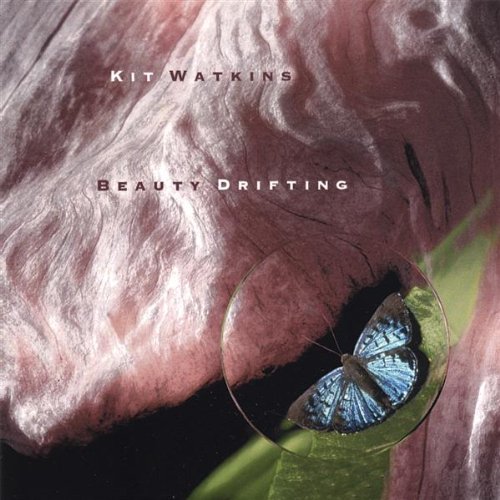 "Eye of the Storm" has got one of the most well-crafted melody lines I've ever heard. Can you shed some light on where that line came from, how it was written, and what inspired it?
"Eye of the Storm" has got one of the most well-crafted melody lines I've ever heard. Can you shed some light on where that line came from, how it was written, and what inspired it?
Nice to hear you like that tune! It was inspired by a Paul Winter piece which I have since forgotten the name of. I wrote the melody and the chord progression at an acoustic piano in my apartment. It was one of the few pieces that I wrote down on paper. I remember writing it down, working very slowly, measure by measure.
Many of your tunes with HtM are referred to as tone poems. How would you define that?
I suppose they're sort of impressionistic pieces, pretty songs. I have a soft spot for those kinds of pieces.
Can you explain the concept behind the artwork on the first HtM album (the butterfly in the glass sphere)? Who created it?
Believe it or not, I didn't realize the similarity of my Beauty Drifting cover with the HtM album until after I had completed it. But, regarding that first Arista album cover, none of us particularly liked it. It was our manager's idea, and was put together by the art department at Arista.
Coco Roussel
-
Born: Paris, France, 1951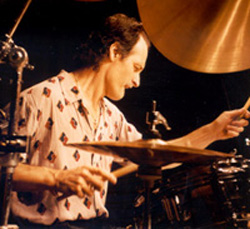
- Current Career: Freelance Drummer
- HTM Influences
- Weather Report
- Bill Bruford
- Dixie Dregs
- Brand X
- Billy Cobham
- Current Influences
- Trilok Gurtu
- Eddie Palmieri
- Kit Watkins
- John McLaughlin
- Patrick O'Hearn
- Proudest HTM tracks
- Labyrinth
- While Crome Yellow Shine
- The Falcon
- Other Projects
- Michael Manring (1989)
- Winston Steward (1990)
- David Arkenstone (1990-1992)
- Schizo (1971-72 w/ Pinhas, Gauthier)
- Heldon (I 1974, IV 1976)
- Westbrook Ayers (1978)
- various w/ Kit Watkins (1980-present)
- Reaching Beyond (1992)
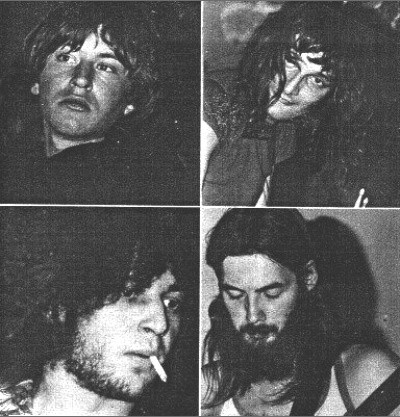 Describe how you met Richard Pinhas and Patrick Gauthier.
Describe how you met Richard Pinhas and Patrick Gauthier.
In the early 70s, my brother Pierrot (bass player) and I met Richard Pinhas through an ad. Soon after we became the group Schizo. The music at first had a progressive rock flavor with vocals. Sometime after, Patrick Gauthier (a friend of Richard's) joined the group. At that point the music evolved towards a jazz / rock/ fusion instrumental flavor. At the time, we always felt as one of the groups breaking the rules and somehow ahead of our time.
How do you think Heldon's music has helped you over the years?
Heldon's music helped by giving me a first taste at what we call today sequenced or computerized music. This started for me the understanding of the relationship between human playing and machine playing.
When you first joined HtM was it difficult for you to learn all of the band's previous material?
I did not find it too difficult to learn HtM's earlier material. Somehow my musical background allowed me to fit right in with the concept of the group and the creative approach of each member.
Were there any songs that were particularly difficult to learn?
Without a doubt the most difficult songs to learn for me were "Stumpy...," "Mr. Mirror...," and "Knee-Bitten..." All very elaborate compositions with a lot of time signature and tempo changes. The Live album tracks from The Cellar Door took place just three weeks after me joining the group combined with some intense rehearsals.
What made you decide to come to America? How did you meet up with Happy the Man?
I had the offer and the help of my former wife's family to become settled in the States in the mid 70s, in Washington, DC. At the time I thought it would be a great occasion to open up my musical career to better opportunities and new ventures. After about two years I had the chance to meet up with HtM through mutual friend musicians. The situation was I heard about them, they heard about me. Both very interested in making the connection. I met the group right after the departure of Ron and the completion of the album Crafty Hands.
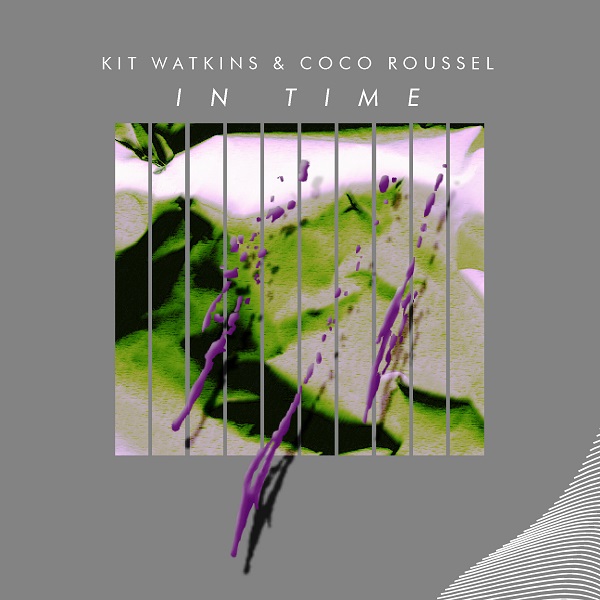 How are you and Kit Watkins able to record music together while being in different parts of the country?
How are you and Kit Watkins able to record music together while being in different parts of the country?
I have known and worked closely with Kit for 18 years now. This allows us to know exactly where each of us is at and then be able to collaborate long distance on projects without the need to be physically in the same room. On Unsettled Scores, for example, Kit sent me a rough basic track of it, mostly for the structure, on a floppy disk. At that point I put down the drum tracks in the sequencer having total freedom on the direction of the piece. Once done, I sent the floppy back to Kit who at that point recorded all his tracks and then mixed and produced the piece to its final stage.
What gear are you using?
My equipment consists of: IBM computer with Cakewalk Pro sequencer, MIDI keyboard controller, Roland Octapad with pads, EMU ProCussion module, Proteus 1/2 module, 24-8 Mackie mix-down console and some miscellaneous outboard gear.
Who were some of the best French drummers during the 70s, in your opinion?
Christian Vander, Daniel Humair and Christian Garros (two excellent jazz players), Daniel Ceccarelli and also Jean-My Troung.
Was Vander and Magma a strong influence on you?
Vander was definitely an influence on me even before the creation of Magma. I always admire his power and unique original style of playing.
What's your compositional process like? Do you play other instruments?
Yes, I play keyboards, guitar and bass. Keyboards are my main tool for composition. I do not have any particular set ways in the process of composing. Sometimes I would start with a rhythm idea, other times a bass line, sometimes chord changes, even a melody line. I do not want my compositions to be exclusively from a drummer's point of view.
What are your favorite songs from the first and second HtM albums?
"Knee-Bitten Nymphs..." and "I Forgot to Push It." If I had to choose...
Michael S. Beck
- Born: Anderson, Indiana, 1952
- Current Career: Musician, President of Talk Productions Inc.
- HTM Influences
- King Crimson (Jamie Muir)
- Weather Report
- Genesis
- Frank Zappa
- Blood Sweat & Tears
- Current Influences
- Joni Mitchell
- World beat music
- Proudest HTM tracks
- Open Book (Death's Crown)
- Hidden Moods
- Other Projects
- Rumble (1981-85)
- Dog Talk (1993-present)
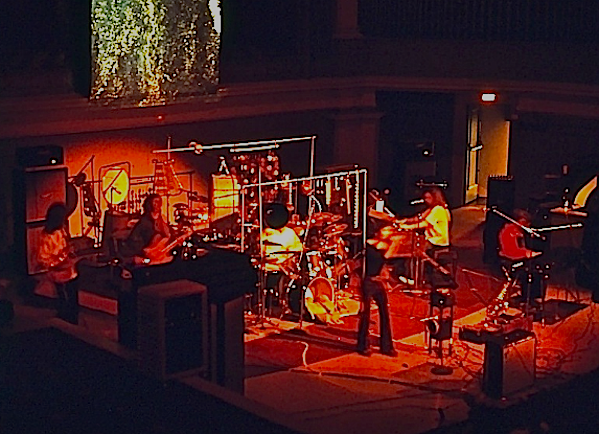 Articles about HtM's live shows from before the first album was even released indicate that the percussion setup you used was very extravagant. What kinds of stuff were you playing?
Articles about HtM's live shows from before the first album was even released indicate that the percussion setup you used was very extravagant. What kinds of stuff were you playing?
My setup consisted of: 2 timps, 1 set of chimes, drum kit, log drums, cymbals, whistles, wind shells, battery toys, whirl tubes, sheet metal bass drum, woodblocks, canisters, pizza pans, dishes, marching drums, toys, gongs, bells, pop guns, football helmets, and anything I could find or make to get the sound I wanted. I grew tired of a conventional kit and found it to be limited. I approach and hear things differently. Whatever I hear in my head, I find the instrument to make a sound that matches it, whether I need to buy that instrument or make it myself. I looked at myself as a percussionist in a symphony that had a whole arsenal of percussive choices, to use for whatever the music called for.
Was it a nightmare to setup and tear down?
Yes. It took up about 10'x12' with scaffolding 7' high around and through it, but it was my home and I loved it. Every instrument in my set played a special part. I knew each instrument inside and out. We had a very good road crew which made my job much easier.
What made you decide to leave the band?
The band took a turn towards a little coarser, harder edge sound that did not suit my playing style. Also, differences developed between the other band members and myself concerning the business and operation of the band. The difference became significant enough that a mutual decision was made that I would no longer remain in the band.
Was the future of the band ever in doubt at that point?
The future of the band as I saw it was already a little shaky previous to my leaving. Replacing me with Ron Riddle for the second album after I had already rehearsed and played the music live with them left the band with limited time to become as tight as we had been and was a risk for HtM.
From a drummer's point of view, how would you describe Ron Riddle's performances with HtM?
Ron's a good drummer. He has an unusual approach to the drum set, especially in his drum fills. However, in my opinion, the lack of percussion that was used changed the style and flavor of HtM.
What about Coco Roussel?
Coco's style better suited HtM. Coco has a softer, more melodic approach. Coco's use of his cymbals added color and grace to the music.
How do Ron and Coco compare to your style on the first album?
I used a far wider range of percussion than either Ron or Coco. I have a wackier, more unusual yet refined style. Ron and Coco used the drum set as the primary function, percussion was secondary. I looked at percussion as an equal expression along with the set.
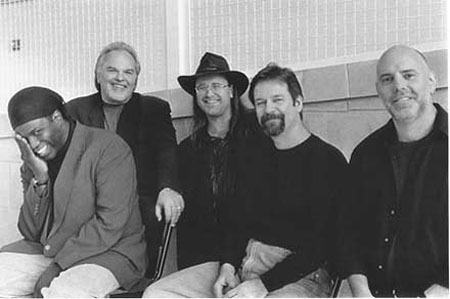 What is your role in your new band Dog Talk?
What is your role in your new band Dog Talk?
I have many roles in Dog Talk. I started the band and I write the majority of the music. I started a corporation called Talk Productions Inc., and I manage the band as well as playing drums, percussion, and vocals.
What's your drum setup like today?
A smaller version of the HtM setup, but including more world beat and African instruments. I still maintain and use a huge collection of percussion and still feel just as strong about music and percussion.
HtM always made ample use of odd time signatures. Was this ever a challenge for you, or did it come naturally?
I had to work at the odd time changes sometimes, I think most musicians do. I would usually hear in my head sounds and rhythms I wanted to put to a particular piece of music, and by persistence and repetition, I could teach my body to become comfortable with any odd time changes. Most of our time changes had a very natural flow to them, especially from one section to another, which made it easier.
Were any tracks from the first album more difficult in that regard than the others?
The beginning section of "New York Dream Suite" took a while for me to construct. It had a very weird inverted repetitive pattern that I had to hold while the rest of the band played their parts. But once your body and mind become comfortable with your part, you can relax and find the groove with everyone else's part and make the song happen.
Were there any songs from the early years, before the first album, that you would have liked to have recorded professionally in the studio at some point?
Yes, I would have liked to do "Leave That Kitten Alone, Armone." Armone was a dog that Frank had. It used to chase this cat we had around, thus the title. It was a very pretty and bouncy tune that we played live quite often. It had a very happy and positive feel to it. Kit and Frank had many looser pieces of music floating around, any one of them I would have loved to work on. They wrote very masterful, emotional, orchestral pieces that I loved to score percussion to. Stanley added the punch to the band, as in "Stumpy Meets the Firecracker..." It was a very good combination. We rehearsed and jammed all the time. We lived to play music.
Ron Riddle
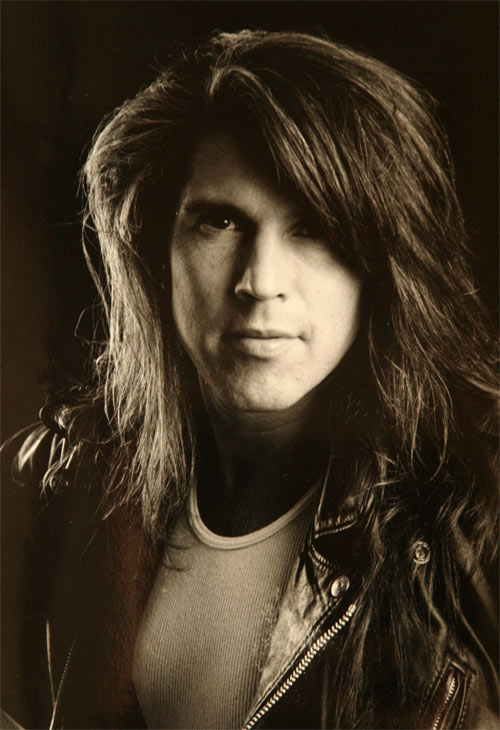 Current Career: Composer for films
Current Career: Composer for films- HtM Influences
- Waves
- Soft Machine
- UK
- Weather Report
- Miles Davis
- Tony Williams
- Elvin Jones
- Stravinsky
- Bartok
- Zappa
- Current Influences
- All of the above
- Peter Gabriel
- Nine Inch Nails
- Proudest HTM tracks
- I Forgot to Push It
- Service with a Smile
- Other Projects
- The Cars (1975)
- Mick Ronson (1980)
- Starland Vocal Band (1975)
- John Sebastian (1981)
- David Broza (1994)
- Stuart Hamm (1991-92)
- Blue Oyster Cult (1987-91)
- The Burns Sisters (1982-89)
- Film and TV scores (1994-1996)
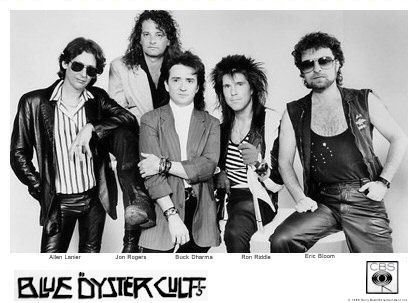 Explain how you came to be the drummer for Crafty Hands.
Explain how you came to be the drummer for Crafty Hands.
I was living in DC at the time and went to see the band perform live. I was very impressed with the band and loved the music. I was also really taken with Mike as a drummer. He was like a dancer playing drums, a really great performer. During the performance one of Mike's windchimes flew off his kit and landed on me. I took this as kind of a sign. I returned it to him after the show and we started talking and decided to get together and do some playing and recording, which we did. We became very good friends in a very short period of time. I later learned that the band and Mike were on the outs. They asked me to join the band about a week prior to the recording of the album. This was a very hard decision for me because it really hurt my friendship with Mike, but the band was doing exactly the kind of music I wanted to do, and I felt that it could be an ultimate musical situation for me, so I accepted.
Was it known up front that your stint with the band would be brief?
No, we didn't really know what was going to happen. It all went down so fast we didn't really have a chance to explore where everyone's heads were at.
Did you ever want to do any live shows with HtM?
I would have loved to do live shows with the band, unfortunately it didn't last that long.
What were your reasons for leaving HtM?
There were a lot of things going on at that time which led me to leave the band. I think one was the way everything went down initially, and the hard feelings that Mike had toward me and the band. The other factor was that it was clear my significant other at the time would not be able to withstand me being involved with the band at the level which it was functioning. By this I mean the band was very incestuous, they had to be. Everyone lived together in one house and did everything together. I had been in that situation before and was kind of burnt out on that kind of immersement. It was a very difficult decision and in another time period I'm sure it would have gone down quite differently.
How were you affiliated with Greg Hawkes (The Cars)?
Greg was my best friend, and we were partners in countless creative projects together. We were in a couple of bands doing music very similar to HtM. We were also in the pre-Cars band which was basically the same line-up as The Cars with the exception of myself and another lead guitarist.
When was "Service with a Smile" written? Was it written specifically for HtM?
It was written around 1973, not for HtM but for a band called Waves that Greg Hawkes and myself were involved in a few years before I came into contact with HtM.
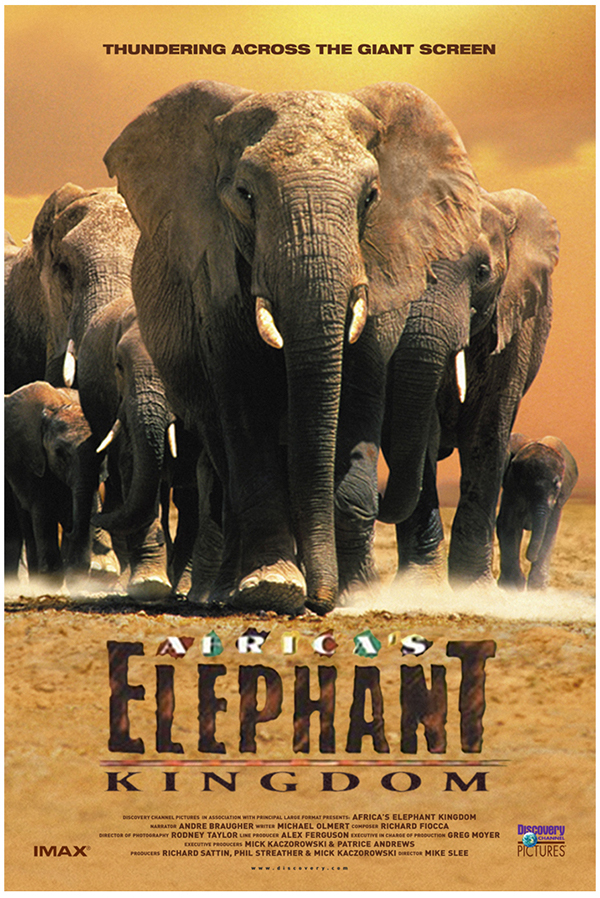 What are some film scores you have worked on?
What are some film scores you have worked on?
Mostly nature films for PBS and National Geographic. Unfortunately at this point they are not available on CD, but I hope to make these available to the public at some time in the future. I also plan on releasing Journey, which is a full length symphony that I've written. It's available now on cassette but not on CD.
Do you do all the recording and arranging in your home studio? What equipment and gear are you using?
Yes, I do the recording and arranging in my home studio. I use a variety of samples which I load into my K2000's. I also use a Proteus 1 and 2 and a Korg M3R along with many different drum modules.
Your performances with HtM rely more strongly on heavy drum fills than either Mike or Coco. What in your opinion makes a great drum fill?
It's relative to the context that it's played in. Of course, there is the technical aspect of timing, velocity, et cetera. But the bottom line is how it fits with the music, how it interacts with the other instruments.
When did you join Blue Öyster Cult? How did you find touring versus session work?
I joined BÖC in July of 1986. Touring was completely different than recording. With recording, more creativity is involved because you are writing or composing parts, then performing them with dead-on accuracy. With touring it's a live interactive performance which is visual at the same time. There are a lot of other things going on other than just the music. If there are inconsistencies in the music, chances are most people will not notice and if they do it's soon forgotten. In a recording studio your performance is scrutinized under a microscope and any inconsistencies are there forever. Both are very challenging and very different in their own way. I've enjoyed both equally at different phases of my career.
Rick Kennel
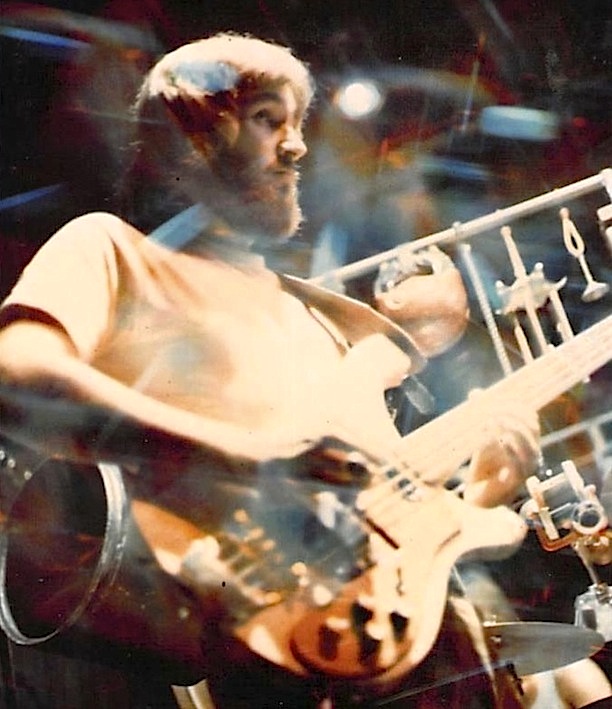 Current Career: business manager in the entertainment industry
Current Career: business manager in the entertainment industry- HTM Influences
- Beatles
- Cream
- Hendrix
- Ekseption
- The Flock
- Aorta
- Van der Graff Generator
- Touch
- Genesis
- Yes
- King Crimson
- Gong
- Gentle Giant
- Proudest HTM tracks
- Merlin of the High Places
- Ibby It Is
- At the Edge of This Thought
- While Crome Yellow Shine
- Hidden Moods
- I Forgot to Push It
- Awake the Simpleton
- Steaming Pipes
- Knee-Bitten Nymphs
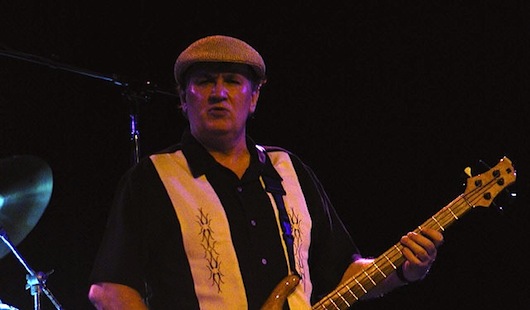 How often did HtM actually rehearse? What were these rehearsal like?
How often did HtM actually rehearse? What were these rehearsal like?
We rehearsed as a rule from 7 to 10 or 11pm five or six nights a week, depending on how well it was going and what we felt we had to accomplish. We all realized pretty early that our purpose revolved around that rehearsal room. We were young, hungry, and very driven. Most of the homework on songs had usually been done at other times prior to rehearsal. We had a chemistry that formed an intense amount of creative tension, bordering on rivalry at times. We excelled at writing parts that were just beyond our technical grasp, and working to playing them smoothly and flawlessly. It was all very self-indulgent actually. We felt that if it pleased us maybe someone else would like it. This method of laboring over every possibility was time consuming but a very gratifying and completely interactive process. That is a big reason why there was no improvisation in the band. For live performances, every song was played exactly the same way every night, even down to the solos.
From your point of view, what were some of the pros and cons about the day HtM spent jamming with Peter Gabriel?
It was definitely interesting. We immediately jumped into learning his tunes rather than jamming. He had just left Genesis and was trying to gauge his next move. After the day we spent working with him on two or three tunes, we got one of our engineers (Ace Pace) to bring in his remote recording truck and record the tunes without the vocals. We sent them to Gabriel's manager and I only heard them once since. I recall riding around in a friend's car in maybe 1981 or '82 in DC with Stan and he popped the HtM / Gabriel tape in. I still don't know where he got it. If anybody has a bootleg copy of the HtM / Gabriel sessions, please send it to me! Gabriel's interest in us had a dramatic impact on Arista, and shortly after those sessions they decided to sign us.
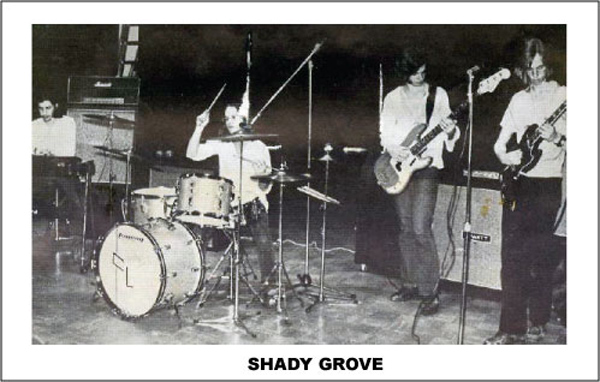 When were David Bach and Dan Owen in HtM and what were their roles?
When were David Bach and Dan Owen in HtM and what were their roles?
David Bach was originally Stan's keyboardist in Germany in Shady Grove. David blew me away when I first saw him play, he was playing a cheesy Farfisa organ through a Marshall stack. He really wanted to stay in school and get his music degree. Stan eventually hooked up with Frank and Kit and David was out. I was still living in Germany when this all went down. Dan Owen was another Indiana friend of Mike, Cliff, and I. After Cliff left, we contacted Dan to see if he wanted to be our singer. I think that as a singer / songwriter he was a little overwhelmed by having three other primary writers in the band. It was a difficult struggle for him to fit in. After his stint with HtM he became Darryl Stuermer's touring guitar tech with Genesis. He and another Indiana friend, Dale Newman, who opened all the Genesis shows on that tour as an acoustic guitar and voice duo.
What was your approach to playing bass in HtM?
As far as my approach goes — I'm not classically trained, I don't read music. I play entirely by instinct, ear, and feel. In HtM I had to overachieve and work incredibly hard just to keep up and make up for my limited natural ability. I was always trying to work out the stutters and make 13/4 or 17/8 feel as smooth as 4/4. My most important role was to provide some backbone and stay out of the way so the changes and melodies could breathe. There was so much busy playing going on that I truly enjoyed laying back and providing some much needed stability.
Was it difficult for you to match up musically with three different drummers?
It was fun and exciting, and kept things fresh and challenging. I had played with Mike Beck in Indiana for several years, so playing with him took no adjustment. The independence he displays between his four limbs is remarkable to me, and he was a true artist when it came to bizarre and unique percussion sounds. Ron Riddle was a power drummer, and to have a drummer on board who loved hard-hitting drumming was a revelation for me. The sheer power in his drumming and his fluency in odd meters still amazes me. It was a sad day for me when Ron decided not to join the band and I still wish we could have played at least one live gig with him. Coco Roussel was just what the doctor ordered. Coco was a talented finesse drummer and added a percussion artistry and sensibility which was much more like Michael's. He was easy to work with, a quick learner.
 Describe your most recent project with your wife, Leah. How did Stanley and Ron contribute to it?
Describe your most recent project with your wife, Leah. How did Stanley and Ron contribute to it?
Leah is a classically trained pianist who studied at Madison University with Dr. Lowell Watkins, Kit's late father. A couple of years ago, she started doing research on the myth, magic, and folklore behind certain flowers. She wrote a gift book detailing this surrounding twelve flowers. Next she composed musical interpretations based on the dramatic content contained in these stories. Most of the tracks are recorded and the search has started to find the right multi-media partner to hand the CD-ROM version of the book and to find the right artist to illustrate and animate the stories. The musical lineup is me on bass, Ron Riddle on drums and percussion, Stan Whitaker on guitar, Leah on piano and keyboards, Gerardo Velez (Spyro Gyra) on congas and timbales, and Gary Blu (Donald Fagen) on horns. The working title is Songflowers.
"Run into the Ground" is a track that had been around since before the first album, and is also the only HtM track with your name attached to it as co-author. How did this song come about?
It was a 5-6-5-4 figure which I was messing with around one day. Kit happened to like it and he wrote a song around it. Kit wrote the changes and the melody and basically the entire song. I have never considered myself a songwriter. I can write grooves all day long but I never had enough technical facility on keyboards or guitar to get into composing songs and writing changes. I am not a frustrated guitar player! My musical life will start and end on bass.
Stanley Whitaker
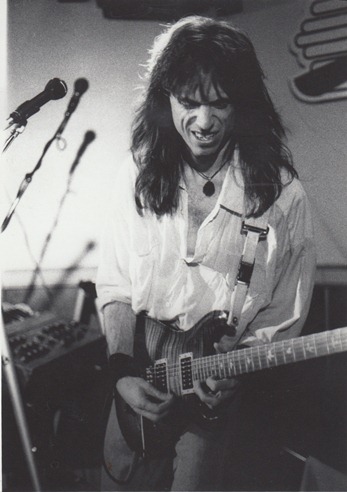 Born: Monet, Missouri, 1954
Born: Monet, Missouri, 1954- Current Career: musician
- HTM Influences
- Gentle Giant
- Genesis
- Yes
- King Crimson
- Gong
- Hatfield and the North
- Debussy
- Free
- Humble Pie
- Mahavishnu Orchestra
- UK
- Jimi Hendrix
- Current Influences
- Peter Gabriel
- Sting
- Kate Bush
- Tori Amos
- Pearl Jam
- Crowded House
- Level 42
- Squeeze
- Jellyfish
- Soundgarden
- The Beatles
- Proudest HTM tracks
- Knee-Bitten Nymphs In Limbo
- Ibby It Is
- Stumpy Meets The Firecracker In Stencil Forest
- Other Projects
- Vission (1979-85 w/ David Bach)
- One By One (1985-93 w/David Bach)
- Avalon (1993-94)
- Spirit Noise (1996-present)
 The middle guitar solo on "On Time as a Helix of Precious Laughs" still to this day sounds way ahead of its time. How was that soaring guitar tone achieved?
The middle guitar solo on "On Time as a Helix of Precious Laughs" still to this day sounds way ahead of its time. How was that soaring guitar tone achieved?
Well, the guitar is my 20-year-old PRS doubleneck which Paul had been building for three to four months before the first album was started and shipped it to me in LA just in time for the guitar tracks. There's a classic photo of me the night I got it fast asleep on my side on my bed with the doubleneck ever-so-delicately balanced on my side. The amp was an old Hiwatt head cranked and the bottom was a 4x12 cabinet with a Vox wah-wah, a Big Muff, and whole lot of reverb courtesy of Ken Scott.
What was your writing process like for HtM?
Kit and Frank and I wrote so distinctly different from one another that we wrote pretty much alone and then would present it to the band for creative consumption. So the interactive part was after the song was written. We were pretty open. Still, to this day, the middle double solo on "I Forgot to Push It" is absolutely one of my favorite solos ever and Kit wrote every note of my guitar part! Just some brilliant two-part harmonies and counterpoint stuff. I've never been very good at sitting down and writing music, so when I "hear" it I just memorize it and figure it out on the guitar later. I've always thought of "Knee Nymphs" and "Stumpy" as cartoon music. Wacky stuff!
What were some of the studio tricks that were used on the first two albums?
Tape manipulation. The solo on "Knee Nymphs." I did one take at normal speed and pitch, then Ken had me learn the whole solo note for note an octave lower and play it at half speed. That was fun! Then he sped it up to match pitch. On the intro to "Carousel," Ken had me play the root note melody line in various octaves at various tape speeds multi-tracked many, many times and the end results sounds more like a synthesizer than a guitar. Each time the line comes around an octave is added so there's three octaves of guitar before the synth and drums come in. Wild sound!
Better Late shows an increase in the percentage of vocal material. What was responsible for this shift?
Basically, I was just starting to enjoy singing and was starting to write lyrics. Before we signed we were 100% instrumental and Arista expressed an interest in us vocalizing and nobody really wanted to sing. I was like "Man, if it helps us get signed I'll friggin' sing!" I sang in high school choir! I grudgingly became the singer. Looking back, I'm grateful because now I truly love singing and am a bit more seasoned vocalist.
 "Such a Warm Breeze" is probably one of the band's best vocal tunes, and is well-suited to your voice. Are you more comfortable singing the mellow stuff? What inspired this song?
"Such a Warm Breeze" is probably one of the band's best vocal tunes, and is well-suited to your voice. Are you more comfortable singing the mellow stuff? What inspired this song?
That's your basic soul-searching-reaching-suicidal kind of song that I won't go into much detail about if you don't mind. My voice was and is suited to singing mellow stuff but I am a rocker at heart! I grew up in Germany from 1968-1972 (my dad was in the army). Paul Rodgers (Free) and Steve Marriot (Humble Pie) really turned me on to singing.
What was the most difficult song for you to pull off live?
Probably "Run into the Ground." Kit wrote this ridiculous lead line which we play in unison. It was challenging just learning it because it was more keyboard-friendly than guitar-friendly. Once again, great lines by Mr. Kit!
What was Death's Crown? How long was it? Was it ever recorded?
That's a better question for Frank since he wrote it. It was initially a 45 minute play in one act with dancers, actors, and a light show. "Open Book" is an excerpt from Death's Crown. We performed it a few times, once at a dinner theater, but I don't believe there's any recordings unfortunately.
How did you come to be offered a session gig on Peter Gabriel's third album? Why did you chose to turn it down?
When Happy broke up in '79 I got in contact with him and he asked me to send him a tape of certain tunes off of his earlier albums and just to play. And me having absolutely no business sense and being quite the "artiste" I didn't follow through. I felt compelled to do my own thing. In hindsight, I do regret that, but hey, after much therapy I think I've finally let it go!
What are your current musical ambitions?
Well, I moved out here to LA two years ago and have basically been honing my skills as a songwriter. Besides the solo acoustic singer / songwriter stuff, in January of '96 I formed a power trio called Spirit Noise playing my songs, and we're actually just getting into the studio soon. We'll record some tunes, do some gigs and see what happens. I believe this is my best shot musically ever. The music's got soul, great melodies and lyrics and balls! Plus, I get to show a bit more of my guitar prowess with this project which is refreshing! Anyways, for all you HtM fans out there, God bless you, I'm still alive, I wasn't a hermit in Tibet or anything, I'm rockin' better than ever and God willing you'll be hearing me soon!
Cliff Fortney
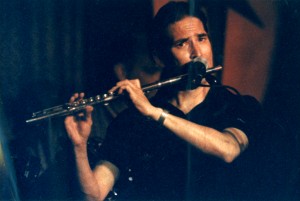 Born: 1952
Born: 1952- Current Career: musician, senior office assistant at insurance co.
- HTM Influences
- Van der Graff Generator
- Genesis
- Stravinsky
- Harry Partch
- Gentle Giant
- King Crimson
- Frank Zappa
- Current Influences
- Peter Hammill
- Mark Isham
- Kit Watkins
- Bartok
- Zappa
- Beethoven
- Stravinsky
- Proudest HTM tracks
- I Think You Know Where I Am
- Don't Look to the Running Sun
- Passion's Passing
- Other Projects
- Shennandoah Song (1977)
- Poor John's Head (1977-80)
- The Dr. Bob Band (w/ Mike Beck, 1980-82)
- JMU Theater Department (1982-93)
- Dog Talk (w/ Mike Beck, 1996-present)
 How did you come to join HtM?
How did you come to join HtM?
Michael, Rick and I grew up together in Fort Wayne, Indiana, playing in a teenage band called Zelda. My father was promoted and transferred out of Fort Wayne before the start of my senior year. I didn't want to move, so Rick and his family took me in for a while. Rick and I were like brothers. Rick and Mike went on to play with a really cool band called Monolith. I went on to play part time with Atlantis (who later became Ethos). That didn't work out very well. In '72 or '73, Rick got drafted and was stationed in Germany where he met Stanley. Rick called and wrote Mike and I, and was hoping we would be interested in joining a band in VA with some guys who were into the same style music we were. Frank hitchhiked out to Fort Wayne to see Michael and me. Shortly after Frank's visit, we loaded up Mike's truck and moved to Beverly (Shenandoah Mountains, that is).
How long were you with the band?
I don't know, I guess not long enough (laughs)...
What were some of the main reasons you decided to leave?
I didn't decide to leave because I couldn't keep up with the technical challenges of the music. At the time I was in a space where I was trying to find myself, and most of all I had the opportunity to study flute with the master Carol Kneibusch-Noe. I feel I could have contributed a lot vocally and with my writing style to HtM, but I left because I was young, maybe a little stupid, and I was on a mission to be a better musician. There were times when I questioned my sanity when I quit HtM but today I have no regrets that I left when I did... but in the back of my mind I occasionally toy with the thought "What if?"...
Were you uncomfortable with the large percentage of instrumental material?
Not at all, for two reasons. First off, I consider myself even now an instrumentalist. Secondly, I was doing a lot of experimenting with some different vocal styles, utilizing my vocals more as an instrument. Though at times it sounded like a wombat in heat. There are some basement recordings of HtM somewhere that had some interesting music with some nice vocal experiments that I'd like to find. I enjoyed trying to integrate my voice with the other instruments, it was exciting.
When you weren't singing were you usually playing Rhodes or flute?
Yes, I also played Hammond when Kit would play Rhodes and Frank sax. I played recorders and a little sax too. At times I marched around with a bass drum that had "Little Cricket" on it. I hope that's what I will be remembered for (laughs).
Were there any other songs that you had written during the early years of HtM besides "Don't Look to the Running Sun" and "Partly the State"?
I had a few more. The one I liked the most was "I Think You Know Where I Am." I feel that had some great possibilities, there's an early recording somewhere. I wrote a circus tune called "London Clowns" which was performed at one show where we had clowns in the theater, I remember we hired a midget clown. I also wrote most of the vocal melody lines for the other guys' songs.
What were your inspirations for the lyrics of "Don't Look to the Running Sun" and "Partly the State"?
Uhh, well... ummm... (laughs). It appears that there was some sort of mind-altering experience that precipitated these lyrics. I guess I was mostly influenced at this time by that lysergic stuff, Baba Ram Dass and J.R.R. Tolkein. I was entering my search-of-self phase and was somewhat of a narcissist at the time. Pretty heavy stuff, huh! As then, as it is now, I was in search of the truth. I guess I wouldn't make a very good politician.
How many live shows would you estimate you performed with HtM?
That's a good one... I'm thinking... maybe 20 plus.
What is your current role as you see it in Dog Talk?
I'm titled The Utility Guy and deemed useful in many ways. For example, I'm in charge of packing the band truck, sending out e-mail, newsletters, and dispensing medication for headaches. My usefulness includes playing all keyboards, flute, piccolo, pennywhistles, recorders, marimba, harmonica, percussion, and a lot of surprises. I also cover lead and back-up vocals. And I've also been known to play a mean nose whistle.
Frank Wyatt
- Born: Roanoke, Virginia, 1954
- Current Career: General Contractor, Woodworker
- HTM Influences
- Genesis
- Gentle Giant
- Yes
- King Crimson
- Gong
- Colosseum
- Head Hands & Feet
- Soft Machine
- Ralph Towner
- Van der Graff Generator
- Satie
- Ravel
- Stravinsky
- Current Influences
- Kit Watkins
- Cyril Pahinui
- Crash Test Dummies
- Proudest HTM tracks
- While Crome Yellow Shine
- Labyrinth
- Footwork
 Where did the song title “Ibby It Is” come from?
Where did the song title “Ibby It Is” come from?
Kit and I were sitting in the dining room at the Quorn Lane band house, where I had a baby grand piano. I was playing the piano parts for Kit and explained that the song was about a surrealistic cartoon character who wanted to be a real person. At that time we had a friend of the band who helped out moving gear sometimes, who's name was Izzy. After trying Izzy as the character's name we evolved it into Ibby, and said, "Ibby it is." Thus the name.
Did you ever have a preference for woodwinds or keyboards? Or was it pretty well balanced in terms of your role in HtM?
I never really thought about that in exactly those terms. I always considered my keyboard playing to be like a rhythm guitar would be with a lead, because Kit is so marvelous on keyboards. I was able to compose using keyboards though, so in that respect I preferred them, as I never composed anything on the sax or flute. Woodwinds were my major instrument in school, and I was able to take the lead on saxophone so I preferred reeds as a medium for personal melodic expression.
All three of HtM's albums have a very strong sense of being timeless, ahead of their time in many ways. Was there ever a sense among the band when these albums were recorded that they would hold up so well over time?
I think we did suspect that we were ahead of our time, but knew a lot of music out there then was ahead of its time as well. I don't recall writing or performing with the intent to be timeless, but I do know we tried to create real music, using dynamics, chords, voices in ways that would be technically correct and strike emotional and even archetypal levels in the listener. As such, the music should by logical extension be timeless.
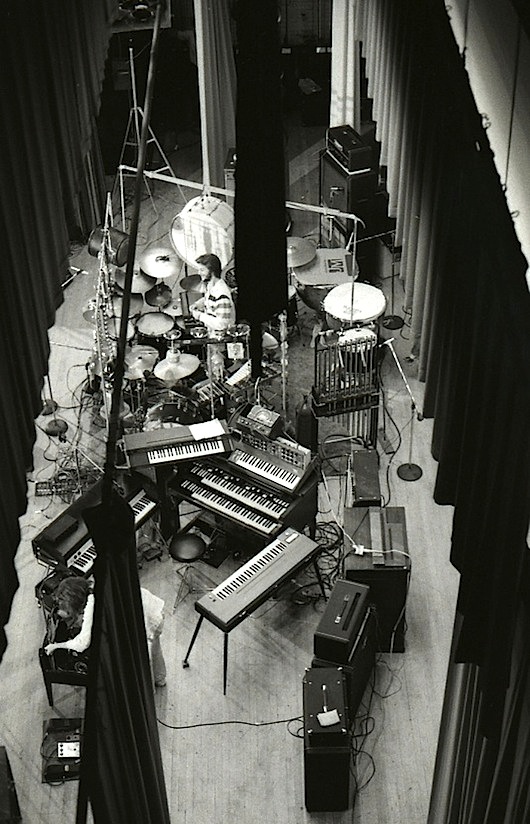 Along the same lines, Kit maintains that many of your personal compositions are timeless. What was your approach to songwriting? Did you ever write things out on paper?
Along the same lines, Kit maintains that many of your personal compositions are timeless. What was your approach to songwriting? Did you ever write things out on paper?
My approach to writing was chords. I would experiment with chords on the piano, and after moving through progressions that seemed to express my feelings at the time, I would then try to establish some motion within the chords. Basically my songs would never have emerged without the rest of the band though. Having the idea in piano form, I would play for the guys, and there was so much truly genius talent in those guys that they could work out an orchestration that just fit perfectly with my "rhythm" piano parts. I did often write things on paper, but usually for copyright use. My poems and lyrics of course were all written down. I was trained as a musician from grade 3, when I started clarinet. I changed over to saxophone in 8th grade, and was All-State Symphonic band first-chair tenor sax in Virginia for three consecutive years. I had a music scholarship to several schools, but chose James Madison University because George West had just transferred there to instruct Jazz Composition and direct the jazz ensemble. Stan and I were both in the music program at JMU, and played in the Jazz Ensemble even after quitting school to work on Happy the Man.
Did the band ever use sheet music on stage?
No, all tunes were memorized note per note, no small feat looking back at the tunes. There were some very complicated things going on in there (laughs).
Did you enjoy writing lyrics? Did you ever wish the percentage of vocal material was higher?
I really enjoyed writing lyrics a lot. I was not a lyricist by any means really, more of a poetry kind of writer, and I use punctuation and the shape of the lines on paper to accent the feeling I'm trying for. Almost all my lines seem to not end, as I use a '...' at the end, for example, from one of my recent poems:
The high clouds, restless...
small stars as time lost emerge...
our smallness seems real...
our past can be seen.
I suppose I did wish our vocals were used more, but we did what we could. Stan came through for us as a vocalist or we would have had none. In the Cliff Fortney and Dan Owen bands we had some amazingly beautiful vocals, and we early on experimented with up to five-part harmonies, but the vocalist as a focal point was elusive with our music I think. After losing Cliff and Dan we were a bit afraid to find someone to replace them, perhaps because our identity had gelled substantially by that time. I can only dream of what sounds would have come from a sustained group with either Cliff or Dan. It would have been marvelous I'm sure.
The set lists for live shows sometimes included a song called "Merlin of the High Places." Was this song ever recorded in any form? Can you describe it?
"Merlin of the High Places" was a song I wrote inspired by a Mary Stewert novel. I was really into Merlin and King Arthur then, and had visualized an entire musical on the theme. I think Kit has a tape somewhere of the piece. It was the first thing we did where we at parts of the music went entirely acoustic with recorders, harpsichord, finger cymbals, similar to the acoustic break in "Open Book without Words." It also had what I think is still the best melody line I ever came up with. I would like to hear that again myself (laughs).
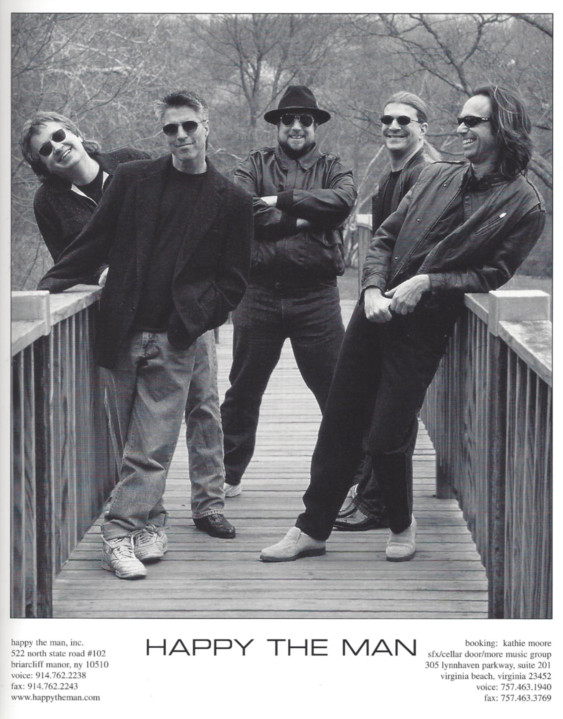 Was it difficult for the band to adjust to three drummers in as many albums?
Was it difficult for the band to adjust to three drummers in as many albums?
I had no difficulty adjusting to the different drummers. Each was totally capable and creative in their own different way, and it was sort of exciting and inspiring to feel the differences. I imagine if it was difficult for anyone it would have been Rick, as the marriage of bass and drums is such a symbiotic thing. He never seemed to be bothered by it to me though, we just all were so into the music, everything would flow, with much happy work of course.
Have you done much songwriting over the last 10 years or so?
I have written perhaps 12 songs over the last decade. Some on keyboards, some on guitar, which I play poorly, but it was all I had. I have been prolific in poetry, though. My guess is I have written about a hundred poems.
The first album credits you with "vocals" as well as Stan. But the lead vocals are clearly Stan throughout. Where does your voice appear?
I don't remember, but if I did sing it would be some high falsetto background somewhere. There was a band, Hatfield and the North, who had these vocal backgrounders called the Northettes and I remember Kit said my vocals were Northette-like (laughs).
How did you originally meet and join HtM?
I met Stanley in a music theory class at JMU. We became roommates, and his dream of the band sounded like the perfect thing to me. Stan turned me on to all the European music that just completely blew me away, having never heard it. He was, is and ever shall be my brother, as in fact all the HtM members will be. I cannot express in words the deep closeness I feel for them.
Filed under: Profiles, Interviews, Issue 11
Related artist(s): Stan Whitaker, Frank Wyatt, Happy the Man, Coco Roussel, Kit Watkins
What's new
These are the most recent changes made to artists, releases, and articles.
- Release: Family - Old Songs, New Songs
Updated 2025-12-29 00:03:41 - Review: The Kirkbys - It's a Crime: The Complete Recordings
Published 2025-12-29 - Release: Various Artists - Psychedelic Underground 20
Updated 2025-12-28 23:33:26 - Artist: Dhope
Updated 2025-12-28 23:27:49 - Artist: Tin Pan Alley
Updated 2025-12-28 23:21:39 - Release: Various Artists - Psychedelic Underground 19
Updated 2025-12-28 23:04:15 - Review: Earthbound - Earthbound
Published 2025-12-28 - Review: Olgoj - A Place to Rest
Published 2025-12-27 - Release: John Weider - John Weider
Updated 2025-12-26 19:13:54 - Artist: John Weider
Updated 2025-12-26 19:09:52 - Release: Moonrider - Moonrider
Updated 2025-12-26 18:51:45 - Artist: Moonrider
Updated 2025-12-26 18:49:51 - Release: Octopus Syng - Insanity Is the Song We Sing
Updated 2025-12-26 12:53:35 - Release: Tre Spiritus - Tre Spiritus
Updated 2025-12-26 12:49:13 - Artist: Tre Spiritus
Updated 2025-12-26 12:48:34 - Release: Arpia - Festa Grande
Updated 2025-12-26 12:42:27 - Release: Sigmund Freud - Risveglio
Updated 2025-12-26 12:37:54 - Artist: Sigmund Freud
Updated 2025-12-26 12:37:08 - Release: Davide Cedolin - Ligurian Pastoral, Vol II
Updated 2025-12-26 00:17:38 - Release: Davide Cedolin - Ligurian Pastoral
Updated 2025-12-26 00:15:05
